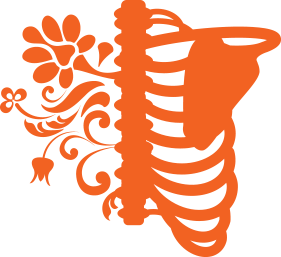Runner’s Knee Self Assessment
Have you been diagnosed with Runner’s Knee or think that you might have it? Knee pain interrupting the activities you love is frustrating, and it can affect anyone regardless of whether they are a runner. The technical term is Patellofemoral Pain Syndrome.
Photo: Audrey Kranz
This condition commonly presents with dull pain and/or tenderness at the front of your knee around your patella (kneecap) while active. You might also feel some rubbing, grinding or clicking while bending and straightening your knee.
There are a wide variety of reasons you might get Runner's Knee including muscle weakness, patella tracking issues, tight posterior chain muscles, overtraining and more.
In our clinic, we often see people who present with quad dominance. That may sound scary, but it just means that while standing the quadriceps muscles are contracted and one or both kneecaps (aka patella bones) may be chronically raised when they should be relaxed.
Other common knee issues that can present with quad dominance are:
Patella tracking issues
Post-operative knee pain
Back of knee pain
Knee osteoarthritis
While we always recommend a trusted McKenzie certified therapist to help diagnose musculoskeletal issues, we are also passionate about sharing a simple and effective way to self-assess and self-treat common issues.
We’ll guide you through what we mean by quad dominance and help you investigate whether it’s something that could be contributing to your knee pain.
What is “Quad Dominance?”
This is a pattern of over-dependence on the quads while standing instead of utilizing our posterior line (i.e. erector spinae muscles, glutes and hamstrings) to hold us up. As we run, use stairs, move into a squat, etc. this raised patella position increases the forces at our knee joint–potentially causing excess wear and tear leading to painful conditions such as patellofemoral pain syndrome.
In this video, you’ll see an example of a patient who has difficulty dropping their kneecaps when relaxing their quad muscles in standing. Notice that both kneecaps (patella bones) stay lifted despite the verbal cues to “lift and lower”.
Quad Dominance – Self Assessment
Position: Standing with straight legs while looking in a mirror or observed by a friend.
Action: Contract your thigh muscles (quads) to lift your kneecaps, then relax your quads.
What you SHOULD see: Your kneecaps should lift with each contraction and lower when relaxing your quads.
If you don’t see patella movement when contracting your quads, then lean your hips against the wall and try to lift/lower again. Be sure to keep your knees straight while leaning against the wall. This position lessens your bodyweight on your legs.
What’s next?
If you have gone through the self assessment, but you are not observing the chronic quad contraction detailed above, then check out our healthy knee video here. This self treatment video outlines how to improve your knee health through proper hip/ankle support, knee alignment, and overall integrity of the hip, ankle, and knee.
If you are observing signs of quad dominance, then read on for our self treatment recommendations.
Self Treatment for Quad Dominance
If you’ve identified that your kneecaps don’t lower on their own, then we’ll teach you to retrain your brain with a manual release.
In the following video, you’ll see demonstrated how to apply the manual cues to get the quad to relax and allow the kneecap to lower.
Performing these cues will help initiate the repatterning, allowing you to eventually stand without quad dominance. Sometimes our brain and body just needs a helping hand to interrupt patterns and form new ones.
Position: Lean your hips against a wall, helping to lessen some of your bodyweight. Place your feet about 12 inches from the wall, knees straight, hinge forward at your hips to observe your kneecaps.
Action: Contract quads to lift your kneecaps, relax quads.
Manual Cue: When your knee caps don’t lower as the quads are relaxed, add a manual cue to push them down. Repeat quad contraction followed by manual cue as needed, until you are able to relax and drop your kneecaps without manual cuing.
Progression: See if you can inch your feet closer to the wall, standing with progressively more bodyweight and observe whether you can still lift/lower your kneecaps, perform this exercise several times per day, several repetitions of lifting/lowering to repattern the brain. Progressively your brain will learn to keep the quads relaxed in standing, with lowered kneecaps, therefore creating a more appropriate dependence on our posterior line for our postural support.
Everyday Play to Retrain Quad Dominance
If the manual cues are beginning to work, then your new goal is to complete the “lift and lower” without the manual cuing throughout your day. By completing the knee cap release in more functional situations, you should be able to reclaim subconscious control of your quad behavior. This will help activities of knee flexion, like squatting and going down stairs, to become less problematic.
Perform “quad check-ins” to retrain quad dominance: Complete about 15 reps each session, repeated several times throughout the day. You will lift and lower your kneecaps during everyday activities such as washing dishes, brushing your teeth, working at a standing desk, etc. Through these awareness exercises, you will rewire the brain-body connection to keep your patella dropped in standing. Eventually this new pattern will become unconscious.
Photo: Audrey Kranz
REMINDER: This exercise is not meant to strengthen, it is meant to teach your muscles how to relax and release the tension in order to help everyday movements become less stressful on our knee joints. This decreases excess wear and tear, which may help to prevent early joint degeneration.
Reach out to us through the comments or email for follow up questions. We’re here to help!


